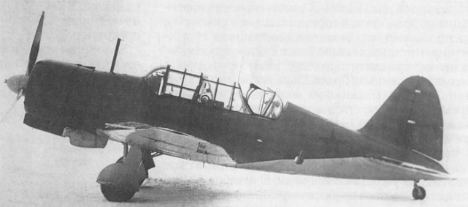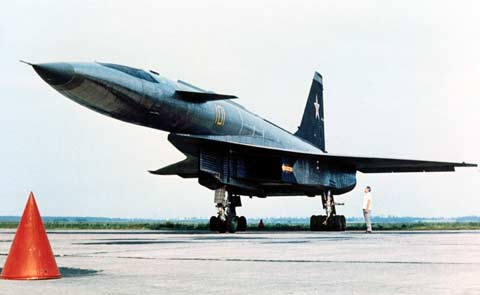
El caza polivalente Su-35. Fuente: sukhoi.org
The creations of Pavel Sukhoi, who founded the company that became one of the best-known manufacturers of fighter jets worldwide, went a long way in arming the Soviet Union’s war effort and victory in the Second World War. He took his first steps in aircraft building in the 1930s in a country still ravaged by civil war.
The new aircraft were built in a simple two-storey building where the designers worked upstairs and the workshops were laid out below. Under Sukhoi’s guidance, the “I” series of fighter planes took flight in the final years of the 1930s. The DB long-range bomber also took off then as did the RD long-distance aircraft, in which a team of Soviet pilots performed a record-breaking non-stop 10,000 kms (6,200 miles) flight, in 62 hours, without landing.
Bombers with a crucial edge
The Su-2 light bomber went into mass production in 1940. An apparently unexceptional short-range aircraft, it had several crucial advantages over rival models: the cockpit design offered the pilot a wider field of vision, while the location of the bomb load helped to increase speed levels. Over 900 such aircraft were built, giving the simple workshop the status of an individual production unit. The armoured Su-6 and Su-8 were subsequently built on the base of the Su-2 design, as was the Su-1 high-altitude fighter, which was fitted with a 20-mm auto-cannon.
 A Soviet aerospace engineer Pavel Sukhoi. Source: Press photo
A Soviet aerospace engineer Pavel Sukhoi. Source: Press photo
During the Second World War, Sukhoi aircraft took an active part in the battles of Moscow, Stalingrad and Kursk, operating under such an effective cloak of secrecy that Soviet troops on the ground did not even recognize their silhouettes.
After the war, Soviet aviation development was concentrated on jet aircraft, and the Sukhoi design bureau was again at the forefront of the work, using this new technology to produce the Su-9, -11, -13, -15 and Su-17 models. These also served as a test platform for the first Soviet pilot ejection systems with parachute braking.
 The Sukhoi Su-2 light bomber. Source: Press photo
The Sukhoi Su-2 light bomber. Source: Press photo
However, none of the immediate post-war Sukhoi models made it into mass production, and an Su-17 crash in 1949 brought a halt in development followed by the temporary closure of the design bureau. It reopened in 1953 and immediately set about creating fundamentally new supersonic aircraft that incorporated either swept or triangular wing designs.
A revolutionary breakthrough
The breakthrough that cemented the Sukhoi team’s place among the leading designers of the age came with the T-4 high-speed reconnaissance, anti-ship and strategic bomber aircraft. Developed from 1962 and now regarded by experts as being 20 years ahead of its time, the aircraft was used to test cutting edge technologies like the welded titanium fuselage and auto-throttle control system.
 The Sukhoi T-4high-speed reconnaissance, anti-ship and strategic bomber aircraft. Source: Press photo
The Sukhoi T-4high-speed reconnaissance, anti-ship and strategic bomber aircraft. Source: Press photo
While the T-4 did not go into mass production, it gave rise to new generations of military aircraft like the Su-24 bomber, which made its maiden flight in 1969. For the first time since the Su-2 a Sukhoi design was mass-produced, becoming the country’s first strike aircraft capable of operating on the battlefield regardless of weather conditions.Pavel Sukhoi, the man who was to found the company that became one of the world’s best-known manufacturers of fighter jets, took his first steps in aircraft building in the 1930s in a country still ravaged by civil war.
 The Sukhoi Su-s5 attack bomber. Source: Press photo
The Sukhoi Su-s5 attack bomber. Source: Press photo
Six years later the bureau scored another hit with the Su-25 attack bomber, unequalled in its power to destroy armored vehicles. Named the Rook (Grach in Russian) because of its distinctive shape, the model still forms the backbone of Russian military aviation. Meanwhile, the design bureau began work on a fourth-generation fighter to produce the Su-27, which produced the Su-30, Su-32 and Su-33 as offshoots.
Moving beyond fighter jets
Technologies perfected by the Sukhoi team also found application in the non-military sphere, most notably in pioneering the artificial heart in the 1960s and 1970s and leading to the innovation’s global application.
 The Sukhoi Superjet 100 airliner. Source: Press photo
The Sukhoi Superjet 100 airliner. Source: Press photo
From the early 1990s onward, the Sukhoi company also started to master production of civil aircraft, producing cargo aircraft and aircraft for agricultural purposes under its brand name. In the 2000s, the Sukhoi Superjet 100 airliner emerged as the flagship model of the company’s civil aviation work, and is now drawing orders from around the world.
All rights reserved by Rossiyskaya Gazeta.
Subscribe
to our newsletter!
Get the week's best stories straight to your inbox